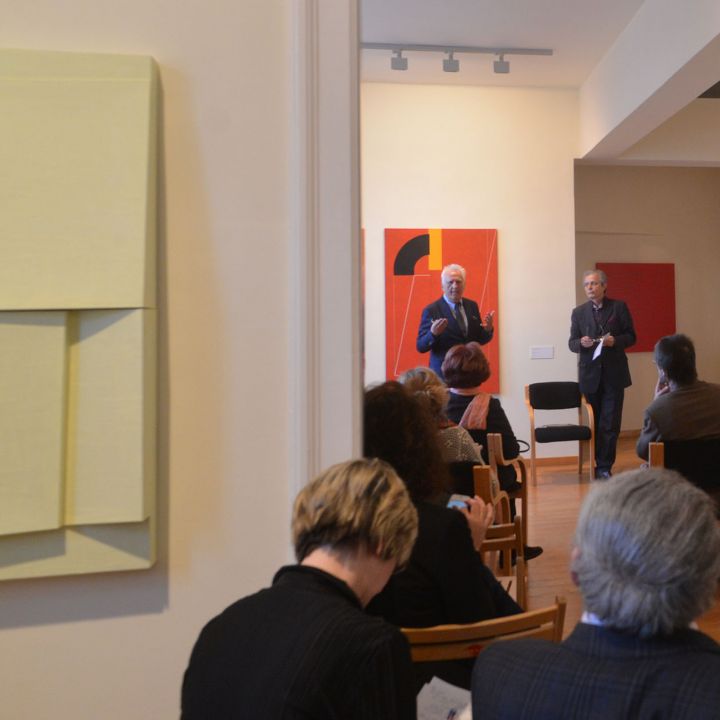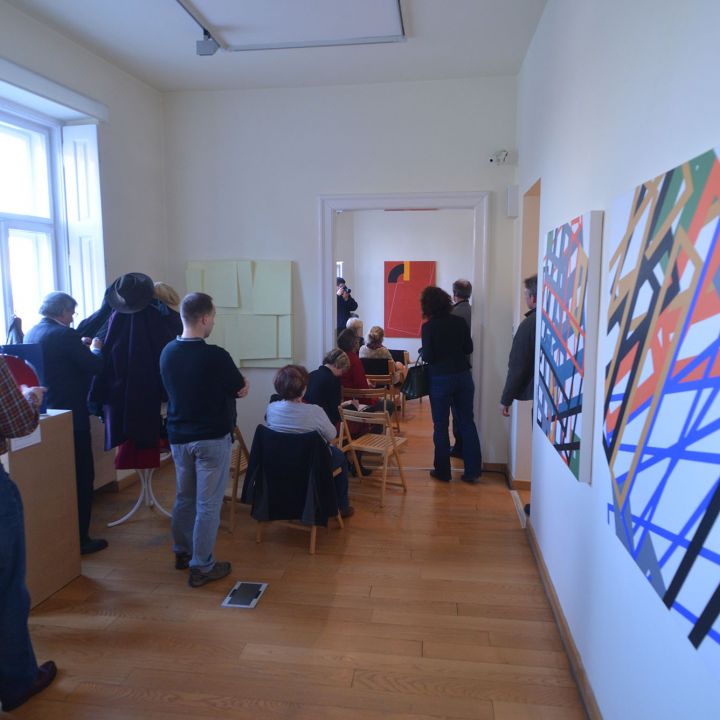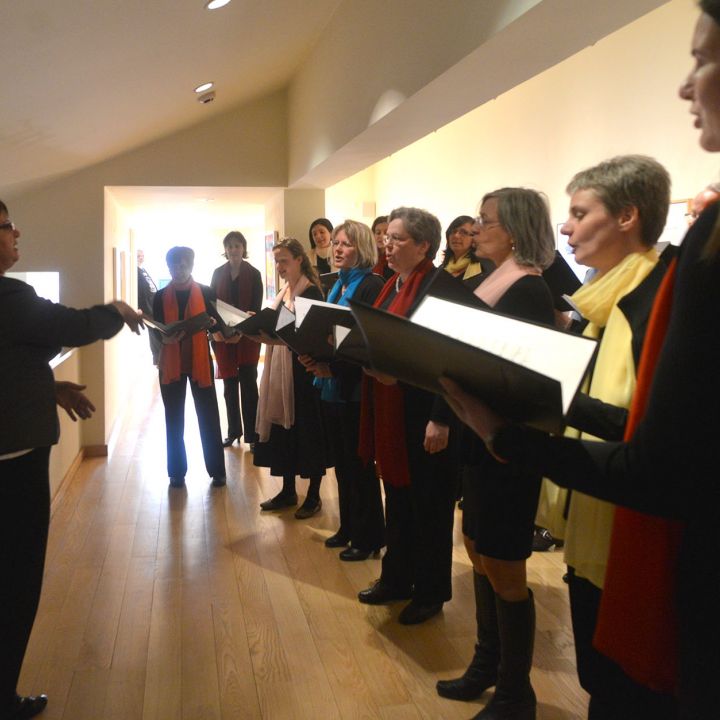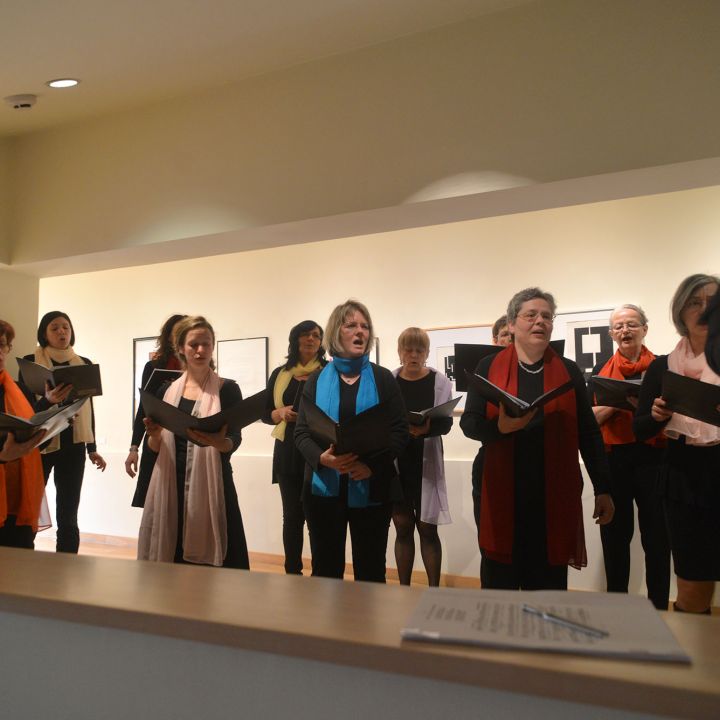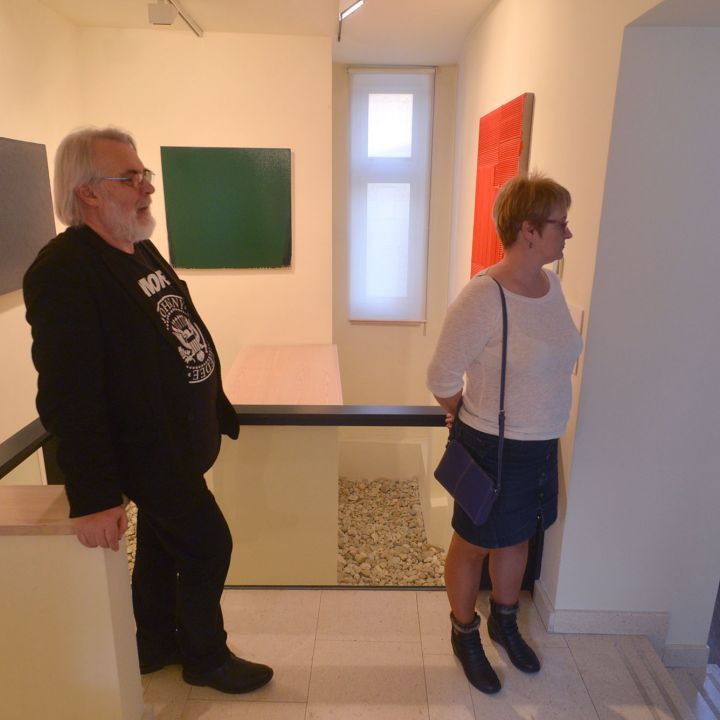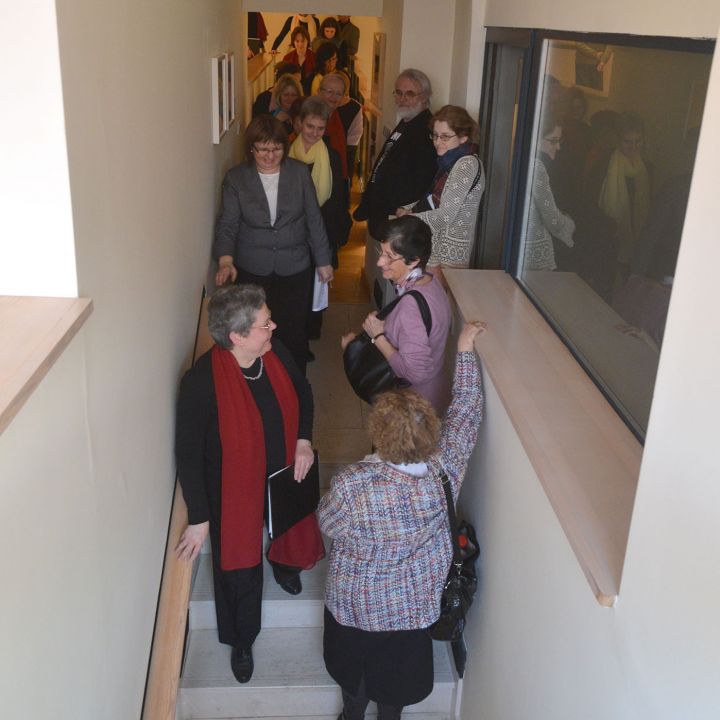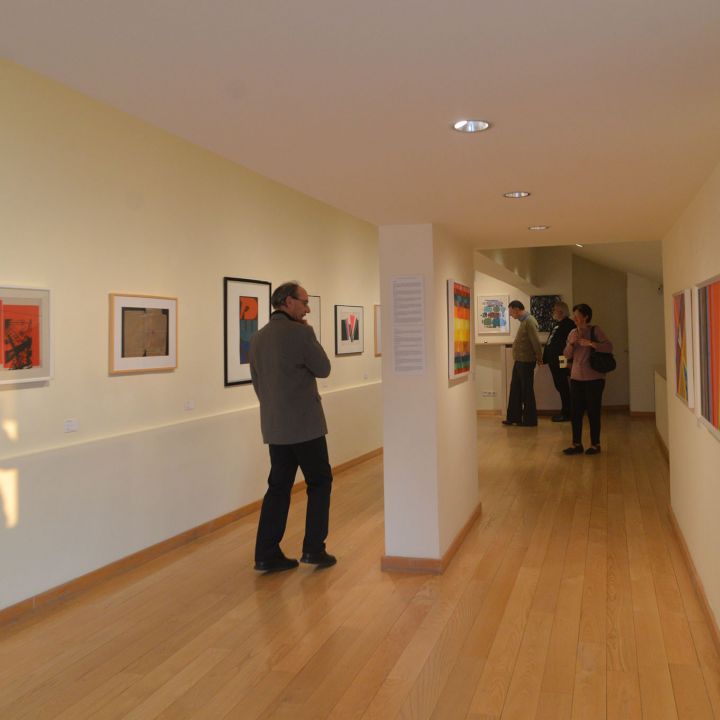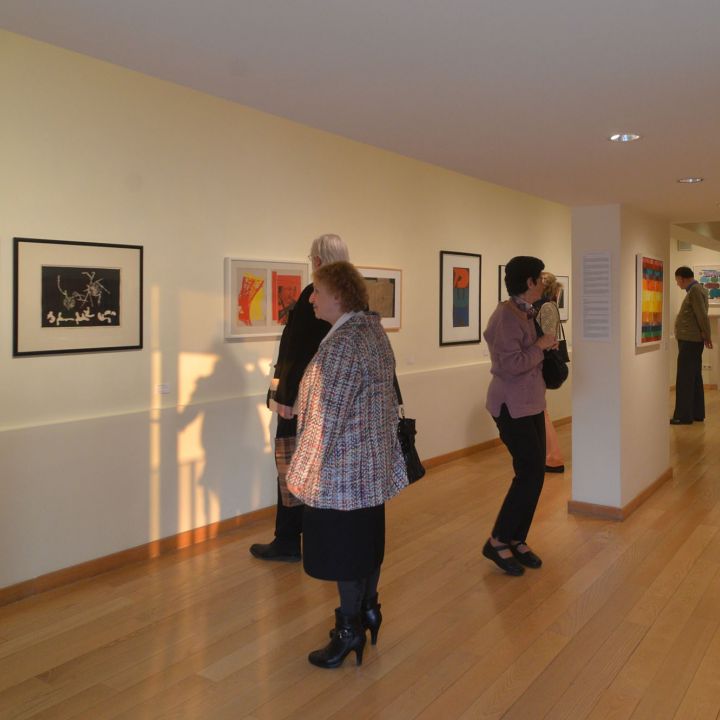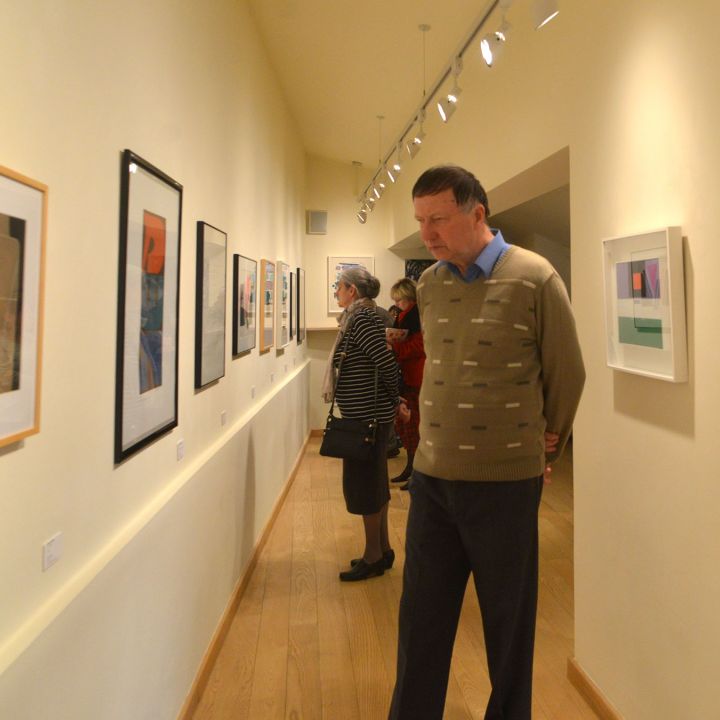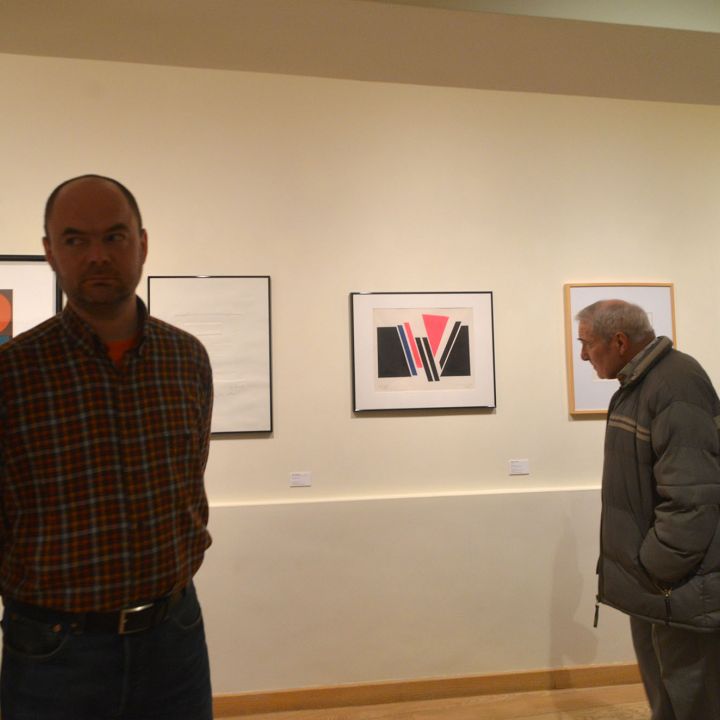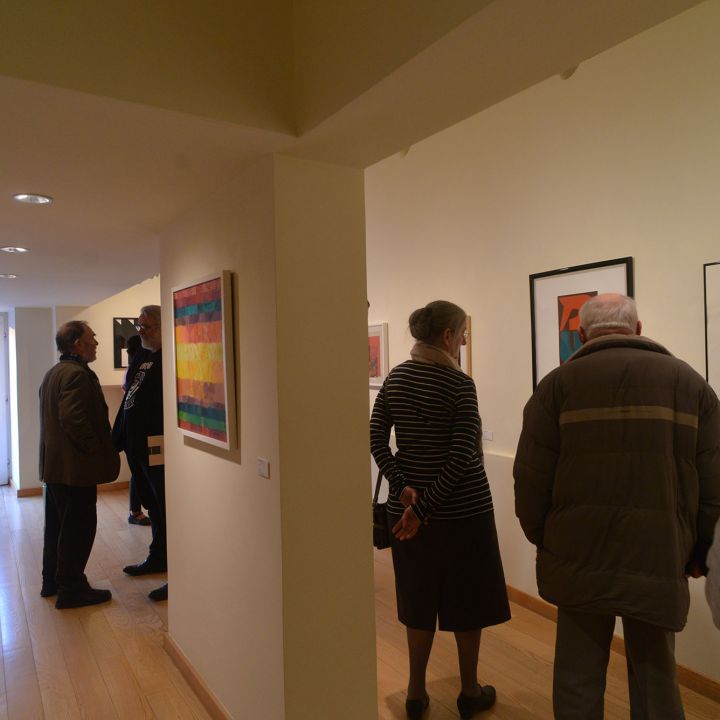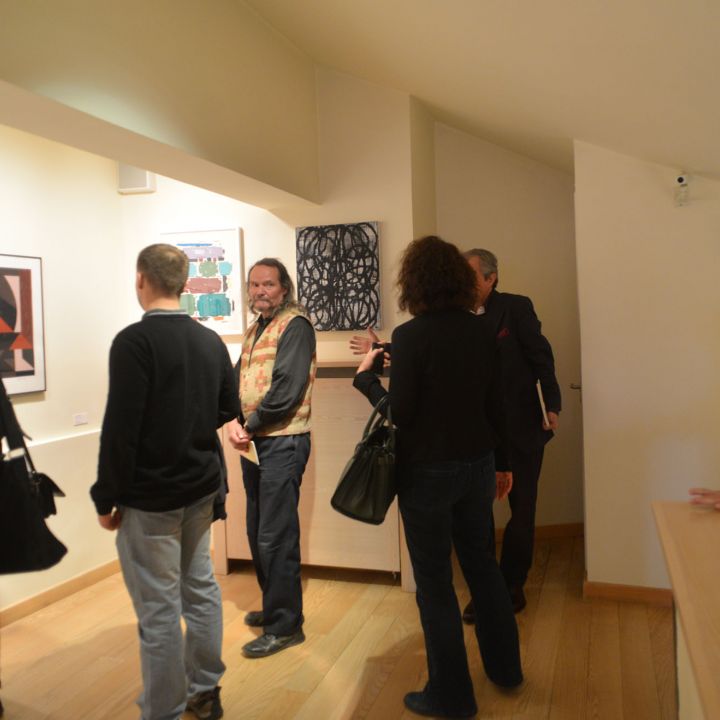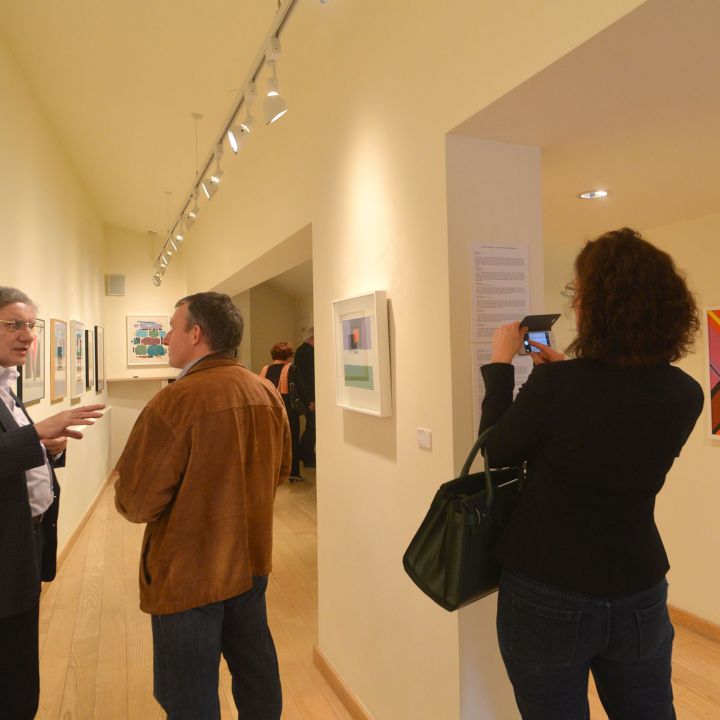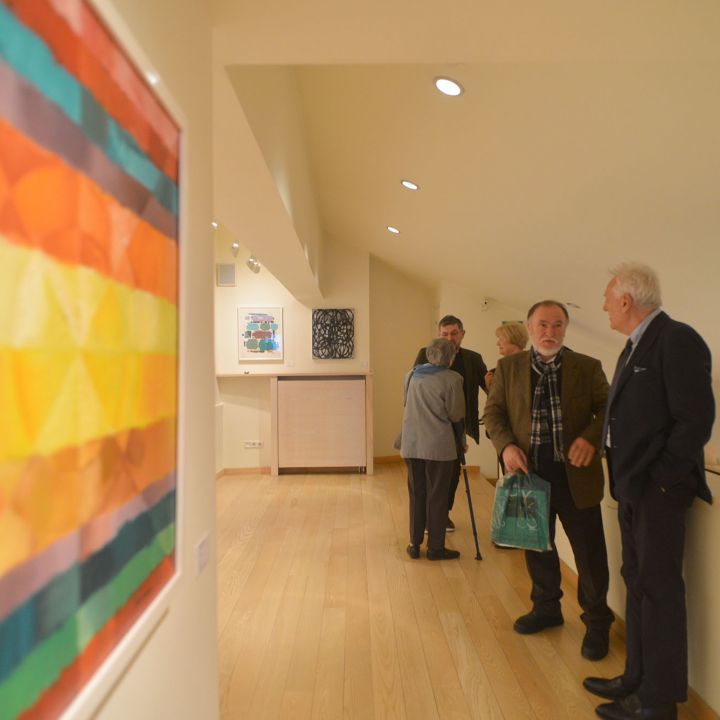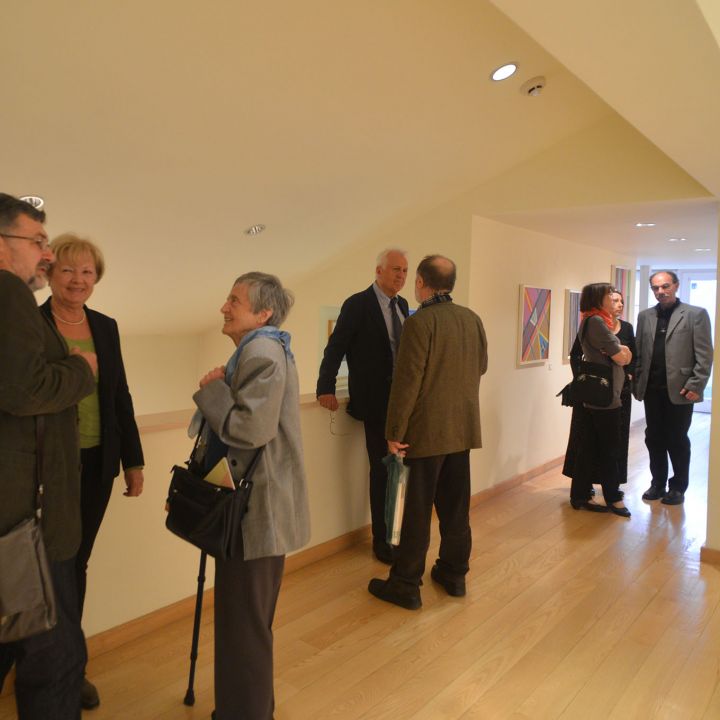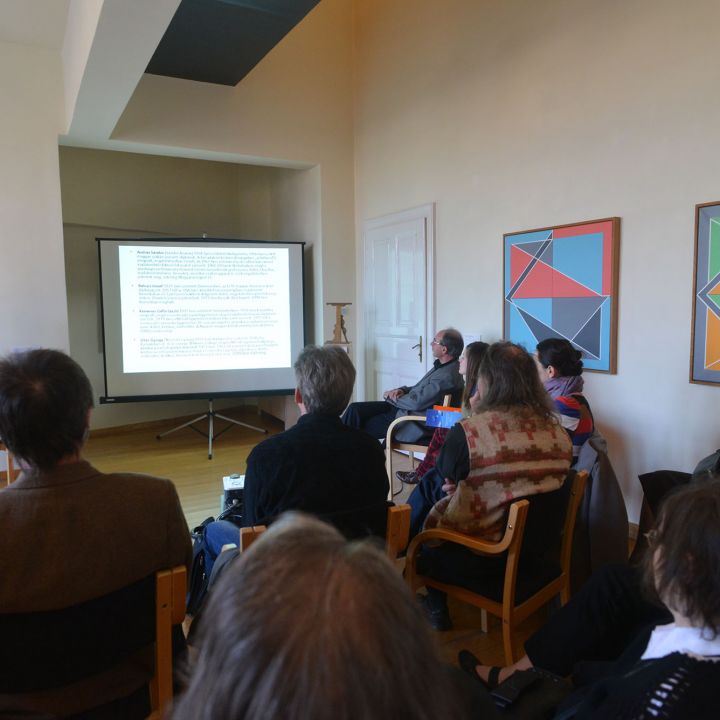The exhibition is part of the Hungarian Days 2015 - Western Diaspora Days. For the exhibition we have selected artists from the László Vass Collection who started their careers in Hungary, graduated from schools, but whose careers were fulfilled abroad and where they became really well known.
Exhibiting artists: Endre Bőszin, Véra Cardot, Lóránd Detre, Katalin Hetey, Rodolf Hervé, József Jakovits, Imre Kocsis, Tamás Konok, Gyula Marosán, Vera Molnár, Tibor Szemenyey-Nagy, Victor Vasarely
About the artists:
Endre Bőszin (1923, Pilis)
Painter, graphic artist, sculptor. He started studying at the Hungarian College of Applied Arts in 1944, but was unable to complete his studies. In addition to painting and graphic art, he also worked as an applied artist for subsistence reasons. In 1956 he left the country, lived in Edinburgh and from 1957 in London. In 1961 he founded the Taurus Artists. In 1966 he moved to Toronto. In the 1950s and 1960s he created expressive figurative paintings and prints. Since the 1960s he has been working as a sculptor. In the late 1960s and early 1970s he created coins with delicate patterns. Since the 1980s his art has been characterised by geometric abstraction.
Lóránd Detre (Budapest, 1903)
Painter. He studied at the Academy of Fine Arts in Budapest. His master was János Vaszary. From 1924 he worked for several years in Nagybánya. In 1929 he participated in a group exhibition of Nagybánya artists. He won a scholarship from the Szinyei Society. In 1926 he left the country for good, working in Berlin, Paris and then in the United States. From the 1940s onwards he participated in international exhibitions. He had solo exhibitions in Paris in 1948, in New York in 1952 and 1957 and in Budapest in 1967. In 1982 he participated in the 2nd exhibition of artists of Hungarian origin living abroad at the Kunsthalle Budapest. His works are in the collection of the Denver Art Museum.
Imre Kocsis (1937, Karcag -1991, Kaltenberg (DE))
In 1956 he emigrated to Germany. In 1958 he began his studies in Hamburg. From 1959 he was assistant to Professor Greska and taught graphic techniques. From 1962-63 he lived in France. From 1963-1970 he worked in his studio in Munich and from 1971 in Düsseldorf. In 1980 he wins scholarships to New York and Düsseldorf. From 1978-1982 he worked in the guest studio of the Stedelijk Museum in Amsterdam. From 1985 he was a visiting professor at the Sculpture Department of the Reykjavik School of Art in Iceland.
József Jakovits (1909, Budapest - 1994, Budapest)
Self-taught artist (painter, graphic artist, sculptor). Representative of the modern art movements of the 20th century. From 1965 to 1987 he lived in New York, where he began painting. He became an American citizen in 1985 and returned to his native country in 1987. In 1990 he was awarded the Distinguished Artist Medal and in 1993 he became a member of the Széchenyi Academy of Arts. By his own admission he has been influenced by painters such as Lajos Vajda, Max Ernst, Miro, Picasso, but above all he has been inspired by prehistoric and primitive art. He felt challenged by European classical culture, but also coped with its influences and incorporated it into his art.
Tamás Konok (1930, Budapest)
He graduated from the Academy of Fine Arts in 1953, where his teacher was Aurél Bernáth. Originally he studied music, but after a few years he decided to study fine arts and since then he has devoted his life to it as a painter with all his strength and talent. He moved to Paris in 1959 and has lived and worked in Budapest and Paris since the 1990s. He is a well-known artist in Veszprém, where an exhibition of his contemporary art collection entitled Gravitation/Spaniards and their Contemporaries was opened in 2011 at the Modern Art Gallery - László Vass Collection. In 2013 his solo exhibition Ludium Pigmentum was open to the public.
László Lakner (1936, Budapest)
Painter, graphic artist. He attended the Fine Arts High School in Budapest, where his teacher was László Balázs Viski. In 1954 after graduating from high school he continued his studies at the Hungarian Academy of Fine Arts, where his masters were Gyula Pap and Aurél Bernáth. Since 1958 he has been exhibiting at home and abroad. His first study trip was to Italy in 1963. In 1964 he visited the Venice Biennale, where he was deeply impressed by the works of Robert Rauschenberg. In 1974 he won a DAAD Künstlerprogramm scholarship in Berlin and in 1976 with a prize from the Paula Modersohn-Becker Foundation in Bremen he settled permanently in the FRG from where he travelled to New York, where he exhibited his work. He was awarded the Kossuth Prize in 1999. He lives in Germany now.
Gyula Marosán (Budapest, 1915 - Toronto, 2003)
He studied at the School of Industrial Drawing in 1931 and between 1932 and 1938 at the school of Vilmos Aba-Novák, spending summers at the art camps in Szolnok and Kecskemét. Between 1946 and 1948 he was a member of the Group of Abstract Artists with his first wife, Magda Zemplényi. In addition to painting he also experimented with sculpture. His awards include the Szinyei Merse Youth Prize, the Work and Reconstruction Mural Competition Prize and Yale and Town Manufacturing Co. graphic design award.
Rodolf Hervé (1957, Paris - 2000, Paris (F))
French photographer of Hungarian origin. His father, Lucien Hervé was also a photographer of Hungarian origin, so for Rodolf the link with Hungary was a natural one from childhood, as was the art of becoming an artist. He arrived in Budapest in the last days of 1989. As a foreigner with Hungarian culture he recorded the years of regime change and threw himself into the Budapest underground. Captivated by the power and atmosphere of Budapest at the time he stayed for nearly a decade contrary to his original plans. At the end of his years in Budapest he felt that the social changes had not lived up to his hopes and returned to Paris in 1997.
Tibor Szemenyey-Nagy (1953, Pápateszér)
Autodidact. He began his artistic studies in 1959 at the Classical Music Department (piano) of the Nagykanizsa Music School. In 1974 he emigrated for political reasons, living in Western Europe, South America and the Caribbean. In 1990 after the collapse of the Soviet-Russian Empire he returned to Hungary. He currently lives in Nagykanizsa.
Vera Molnar (1924, Budapest)
Between 1942-1947 she studied at the Hungarian Academy of Fine Arts. Later she settled in Paris with her husband, psychologist Ferenc Molnár. Since 1968 she has been exploring the possibilities of computer art. Between 1974 and 1976 she developed the "Molnár" program, one of the earliest examples of computer art. As a student she painted cubist and then abstract pictures, and until the late 1950s she was strongly attached to the constructivist tradition. From the 1960s onwards her work at the boundaries of science and art unfolded on a mathematical basis that transformed basic shapes, especially the square always focusing on qualitative change, the 'fantastic event' in her successive, similar works. She currently lives in France.
Véra Cardot (1920, Budapest - 2003, Gif-sur-Yvette)
She left Hungary with her parents at the age of five. She spent her childhood in Toulouse and later studied in Paris. She began her career as a journalist. Her writings appeared in newspapers in Lyon, Toulouse and Dakar, and later in architectural and fine arts magazines. Initially she only took photographs for her reports, and then working with Pierre Joly she became known for her work on art and architecture. In 1964 she began painting, but soon began to use other tools in addition to brush and canvas: rope, twine, fishing line, flax and hemp twine, which opened up a new way of expression and over time the images gradually evolved into sculptures.
Victor Vasarely (1906, Pécs - 1997, Paris)
He can be considered the most important representative of "op-art". At the age of 20 he entered the Budapest Workshop Academy, where he studied under Sándor Bortnyik and adopted the spirit of the Bauhaus school, one of the most influential art movements of the 20th century. In 1959 he was granted French nationality. In 1981 he was awarded the most prestigious French award, the Order of Honour, in recognition of his work.

